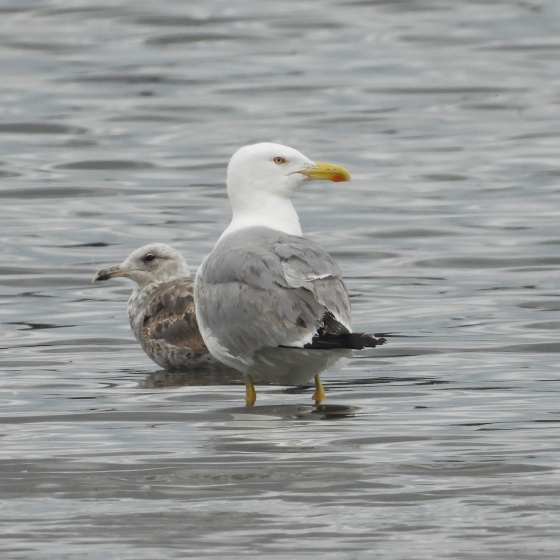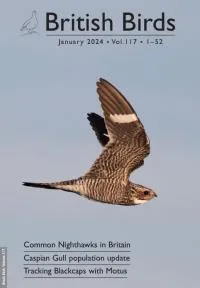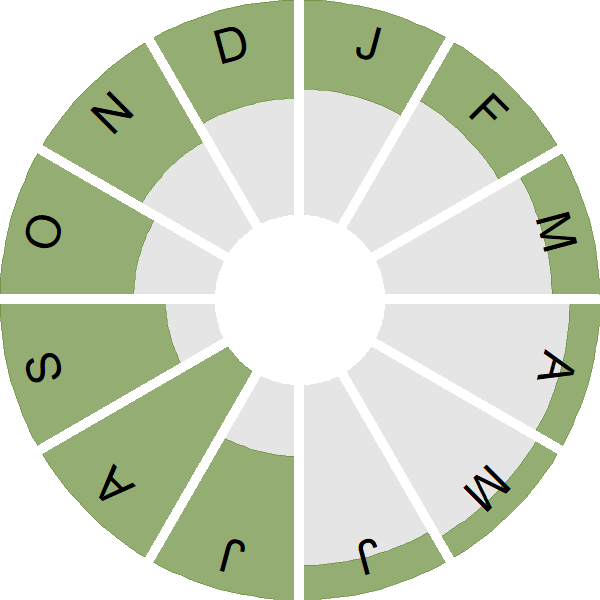Yellow-legged Gull

Introduction
Slightly larger and darker than a Herring Gull, the Yellow-legged Gull has a southerly distribution within Britain & Ireland.
The species was formerly recognized as species by the British Ornithologists' Union in 2005, even though birders had been recording its occurrence for some years. Increasing numbers of records, including a small number of breeding pairs along the south coast, reflect the expansion of breeding populations on the Continent and in North Africa. Our birds are at the very northern edge of their breeding range.
In autumn and winter birds can be seen more widely, often joining other gulls at feeding and loafing sites.

Key Stats
Identification
Songs and Calls
Call:
Status and Trends
Conservation Status
Population Change
Yellow-legged Gull was only separated from Herring Gull and given full species status in 2005 Sangster et al. 2005]. It is present in the UK throughout the year but is considered a very scarce breeder, with only two or three confirmed breeding records each year. Most winter records are from central, eastern and southern England [Balmer et al. 2013]. The long-term [WeBS trend for Yellow-legged Gull is stable.
Distribution
Yellow-legged Gulls are found throughout the year but there is a distinct peak in numbers between mid July and the end of August, when there is an influx of juvenile birds from Europe. The winter distribution map shows that most records came from central, eastern and southern Britain, where they use a range of inland and coastal sites, such as waterbodies, pig fields and landfill sites. In Ireland they were recorded mainly on the east and south coasts.
Occupied 10-km squares in UK
or view it on Bird Atlas Mapstore.
or view it on Bird Atlas Mapstore.
European Distribution Map
Distribution Change
or view it on Bird Atlas Mapstore.
or view it on Bird Atlas Mapstore.
Seasonality
Yellow-legged Gulls can be recorded year-round and small numbers breed. They are particularly evident in late summer when there is a large influx of post-breeding adults and juveniles.
Weekly pattern of occurrence
The graph shows when the species is present in the UK, with taller bars indicating a higher likelihood of encountering the species in appropriate regions and habitats.

Movement
Britain & Ireland movement
Foreign locations of birds ringed or recovered in Britain & Ireland
Dots show the foreign destinations of birds ringed in Britain & Ireland, and the origins of birds ringed overseas that were subsequently recaptured, resighted or found dead in Britain & Ireland. Dot colours indicate the time of year that the species was present at the location.
- Winter (Nov-Feb)
- Spring (Mar-Apr)
- Summer (May-Jul)
- Autumn (Aug-Oct)

Biology
Survival and Longevity
Survival is shown as the proportion of birds surviving from one year to the next and is derived from bird ringing data. It can also be used to estimate how long birds typically live.
View number ringed each year in the Online Ringing Report.
lifespan
Classification, names and codes
Classification and Codes
- Order: Charadriiformes
- Family: Laridae
- Scientific name: Larus michahellis
- Authority: JF Naumann, 1840
- BTO 2-letter code: YG
- BTO 5-letter code: YELGU
- Euring code number: 5926
Alternate species names
- Catalan: gavià de potes grogues
- Czech: racek stredomorský
- Danish: Middelhavs-sølvmåge
- Dutch: Geelpootmeeuw
- Estonian: lõuna-hõbekajakas
- Finnish: etelänharmaalokki
- French: Goéland leucophée
- German: Mittelmeermöwe
- Hungarian: sárgalábú sirály
- Italian: Gabbiano reale
- Latvian: Vidusjuras kaija
- Lithuanian: geltonkojis kiras
- Norwegian: Gulbeinmåke
- Polish: mewa romanska
- Portuguese: gaivota-de-patas-amarelas
- Slovak: cajka žltonohá
- Spanish: Gaviota patiamarilla
- Swedish: medelhavstrut
- Welsh: Gwylan Goesfelen
Research
Causes of Change and Solutions
Causes of change
The population trend for Yellow-legged Gull is stable, therefore there are no causes of change to note.
Publications (1)
The status of the UK’s breeding seabirds
Author: Stanbury, A.J., Burns, F., Aebischer, N.J., Baker, H., Balmer, D., Brown, A.F., Dunn, T., Lindley, P., Murphy, M., Noble, D.G., Owens, R. & Quinn, L.
Published: 2024
Five seabird species are added to the Birds of Conservation Concern Red List in this addendum to the 2021 update, bringing the total number of Red-listed seabird species to 10, up from six since seabirds were last assessed. The Amber List of seabirds moves from 19 to 14 species, and the Green List increases from one to two species.
29.09.24
Papers


